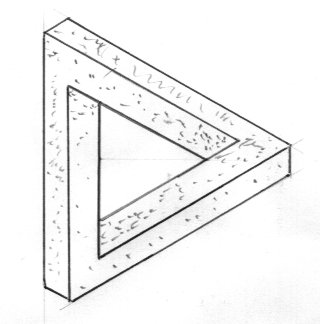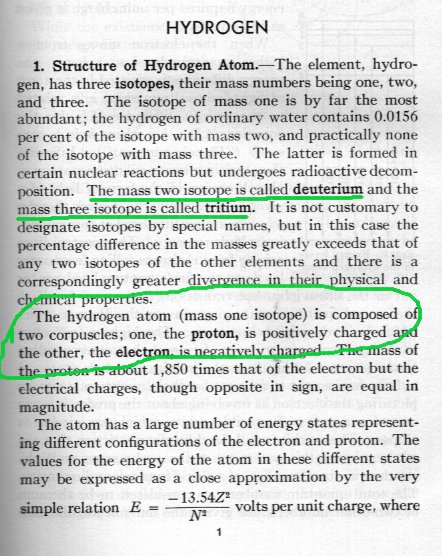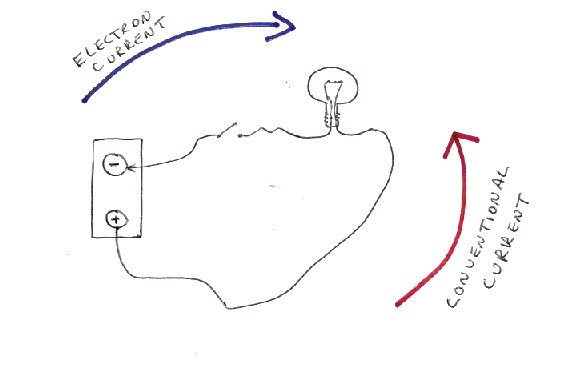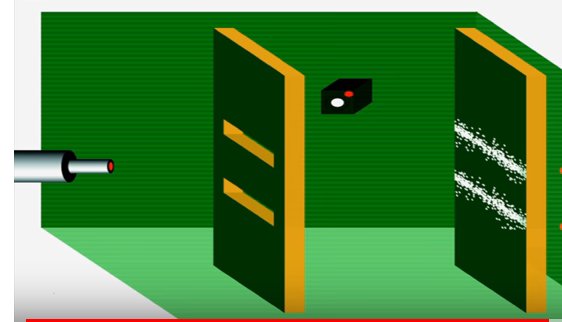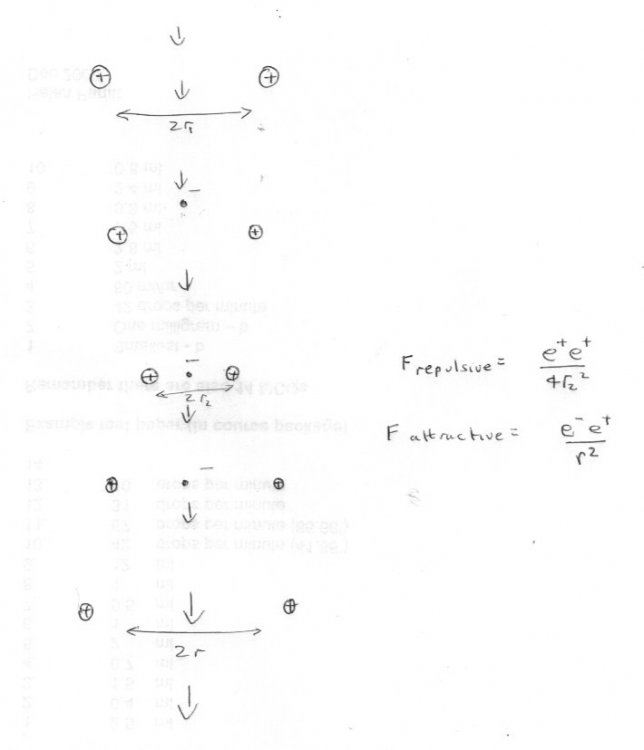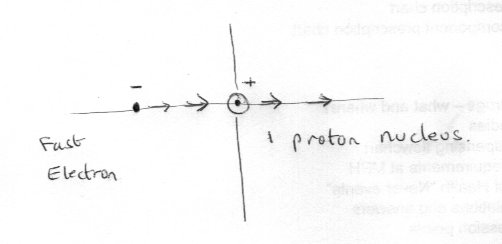-
Posts
18273 -
Joined
-
Last visited
-
Days Won
104
Content Type
Profiles
Forums
Events
Everything posted by studiot
-

If an electron falls through the nucleus of an atom...
studiot replied to Butch's topic in Speculations
You wouldn't directly. The wave function of anything describes its interaction with the whole of its environment. The protons constitute the dominant part of the environment of these electrons. This accounts for main quantum numbers. Only the Pauli exclusion number describes the fact they (must) have opposite spins. -
So are you stating categorically that Penrose is incorrect to display that drawing as non local? Or are you disputing my statement that there are many ordinary common or garden examples of non locality in ordinary common or garden classical mechanics? Perhaps you should confirm in a few words exactly what you think non locality means. Any other discussion (including slagging him off) of Penrose is OFF TOPIC.
-
Here is a real example of non locality (after Penrose). There are many simpler (more obvious) ones in Mechanics.
-

If an electron falls through the nucleus of an atom...
studiot replied to Butch's topic in Speculations
I don't see any neutrons, would you be so kind as to point them out? -

Additional Question About Surfaces in Higher Dimensions
studiot replied to steveupson's topic in Mathematics
Steve, this is a suggestion for you. Applied Mathematics acknowledges something called a continuum which roughly means XY or XYZ space (or whatever). There is a whole area of ApMath called continuum mechanics which studies movement within a continuum. When rigid bodies and non rigid bodies move, they change their xyz coordinates. These changes can be split into linear deformations and angular deformations. The angular deformations can be composed into a single Vector (2D) or Tensor (3D) known as the Spin Vector or Spin Tensor. So imagine a point and a direction arrow emanating from that point on a block of rubber that is being deformed. The point will move from X1Y1Z1 toX2Y2Z2 and the arrow will rotate to point in a new direction during the deformation. These values will change as the deformation proceeds. Alternatively the distance between two points may well change as will the direction of the arrow linking them. I wonder if you are trying to describe the spin vector/tensor part of this since it is very similar to the idea you are trying to put over. A word of warning if you try to look this up. This is not the spin vector of quantum mechanics and the theoretical Physics approach using Noethers theorem is not directly relevant either. The mathematics of this requires advanced calculus and will be found in applications in diverse fields as fluid mechanics, earth science, stress analysis, electrodynamics etc. -
You will need to be more specific than that for much of an answer. With some reactions that are temperature sensitive you can freeze the process thermally.
-

If an electron falls through the nucleus of an atom...
studiot replied to Butch's topic in Speculations
Just in case you have any doubt here is an extract from Wikepedia which shows that Deuterium was discovered, before the Neutron. It's been nice talking to ya. -

If an electron falls through the nucleus of an atom...
studiot replied to Butch's topic in Speculations
Now please read the following extract from my Handbook of Inorganic Chemistry This couldn't be clearer. HYDROGEN AND ITS ISOTOPES DEUTERIUM AND TRITIUM HAS ONLY ONE PROTON A AND ONLY ONE ELECTRON If you insist on publishing diagrams of atoms of other elements and calling them hydrogen or one of its isotopes there is no point our continuing this discussion. -

If an electron falls through the nucleus of an atom...
studiot replied to Butch's topic in Speculations
So you confirm they are deliberately positive signs, not just crosses? -

If an electron falls through the nucleus of an atom...
studiot replied to Butch's topic in Speculations
Some of the concepts I am discussing need new words (nucleus area for example) others are my ignorance or carelessness. I do not mind being corrected, after all a person without humility cannot learn. I have corrected you twice now as nicely as I can. But you continue to misuse words with the resut that I (or anyone else) can't be sure what you are talking about. And then again you may just be misusing terminology. So I will leave you with a parting question. Why are your small circles with the positive signs in the middle not at the centres of the large circles which appear to show orbiting blobs? And why are you not using all of the three available dimensions or are your 'atoms' truly flat? -
It's called the broken record technique.
-
Personally I blame the Kellog brothers and their sunshine breakfast for the confustion. I mean, depicting that Sun with all those rays coming off! Well! The lines or rays that are drawn are not the paths of light waves. They are geometrical lines drawn for mathematical construction purposes. In particular they are drawn perpendicular to wavefronts, which therefore exist in dimensions perpendicular to those rays.
-
If you really want to look into electric sign conventions, then we should have a new thread. It would be a diversion here. So I will just put up one diagram and ask you to consider the terminals of a battery, particularly the negative one. When the switch is closed conventional current is said to flow around the circuit in the direction of the red arrow. No actual discussion of charge carriers is needed. The Disney fairy tale about electrons runs like Nellie the Elephant who packed her bags and said goodbye to the circus. So the tale goes that the electrons pack their bags and say goodbye to the negative terminal and go on their holidays around the circuit, arriving at the positive terminal. Question one As each electron leaves the negative terminal does that terminal become slightly less negative ? If not that must mean new electrons arrive frome somewhere to take their place. So Question two Where do all these electrons come from (that is how do they get to the negative terminal?) ? Question three Why is the positive terminal positive?
-
The thing is they don't have to be big and scary. I have been trying to teach leprechaun who does my washing up to write my posts for Scienceforums.
-
Perhaps these responses are a bit harsh and some humility is in order. I have been frankly amazed (along with many others) at the fantastic creatures shown on Blue Planet II by David Attenborough. Remember more people have walked on the Moon than the very bottom of the Pacific Ocean.
-

If an electron falls through the nucleus of an atom...
studiot replied to Butch's topic in Speculations
As I said, but you didn't acknowledge, when you start using words for the purpose for which they were intended, rational discussion can move forward. You have the germ of an idea which lies somewhere between the Thompson 1904 'plum pudding' model of the atom and the Bohr 1913 orbital model. Probably quite close to the Rutherford 1911 model. However, they all called Helium, Helium and Hydrogen, Hydrogen. That enabled discussion. There was a great deal of head scratching in those days to come up with these three models and the history is quite interesting and pertineent to your ideas. -

If an electron falls through the nucleus of an atom...
studiot replied to Butch's topic in Speculations
When you get to the moon, remember to bring me back a pound of green cheese. -
Yes the excellent Khan Academy video makes no unsupportable claims and is entirely within mainstream physics. And yes it make good use of the tried and tested Huygen's Principle to do this. I have reported Dalo's two fingers to my question so I will wait for the outcome before I answer your comment Geordie.
-
In your post#2 you describe Al Khalilli's lecture, But you fail to observe what he hasn't told you about this presentation. Can you see what is missing from this screenshot?
-

If an electron falls through the nucleus of an atom...
studiot replied to Butch's topic in Speculations
I am not going to waste any more time on your redefining the wheel as a cog. I will be happy to help when you are ready to use well established words conventionally. -
I don't know if you are talking about the ill fated attempt to replace 'conventional current' with 'electron current' in electric threory. That was a really bad idea and lead to much confusion in the 1990s. The plain fact is that currents can be the flow of either positive or negative charges or both. It is difficult to say which is more common. The issue was resolved by choosing a convention many years ago, now called 'conventional current'. This was neither the right nor wrong way round, but it did allow the whole of electric theory to develop to what we have today. Whatever convention you choose you have to actually choose not one but two sign conventions and you cannot avoid the situation where some quantity seems 'the wrong way round'. Therefore there is no point changing current direction conventions and I strongly recommend you stick with conventional current. Thanks for the vote of confidence expressed about my posts.
-

If an electron falls through the nucleus of an atom...
studiot replied to Butch's topic in Speculations
The only atom with two protons is called helium. Deuterium has one proton and one neutron. This is basic chemistry that I will leave you to look up as I bid you good night. -

If an electron falls through the nucleus of an atom...
studiot replied to Butch's topic in Speculations
Then it is not deuterium, it is helium. So let us model helium with two protons and consider your model of the passage of one of the electrons through the gap. Classically, as you say, the electron will exert a pulling together force on both protons. At some point when it is close enough this force will be greater than the mutual repulsive force of the two positive charges, depending upon the dimensions of the gap. This effect will be greatest when the electron is centered between the two protons. After this point the effect will diminish as the electrons passes the centre. So the passage of the electron will cause the protons to oscillate closer and further in position. Have I understood your model correctly? -

If an electron falls through the nucleus of an atom...
studiot replied to Butch's topic in Speculations
Note deuterium has only one electron. Here is my problem. Take the simplest atom, that of hydrogen with exactly one proton and one electron. You say that the electron passes through the nucleus, and the centre of the hydrogen nucleus is smack bang in the centre of its only proton. So the electron must pass clean through the proton. -

If an electron falls through the nucleus of an atom...
studiot replied to Butch's topic in Speculations
I don't follow this. You say the protons are pulled back. Why or what do you think pulls the proton(s)? Pulled back from where to where?


